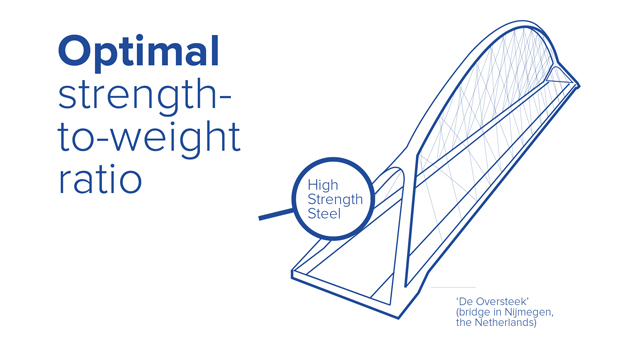The challenge, to improve the sustainability of the built environment, is one of the most critical in construction today.

The construction and use of a building is very energy intensive. From the manufacture of the building materials and their transport to site, to the construction process itself, all use considerable amounts of energy and create significant emissions. On top of that we have the energy and emissions associated with using a building. And there is further bad news; at end of life we need to do something with the building and the materials within it, all of which takes energy and produces more emissions.
This challenge, to improve the sustainability of the built environment, is one of the most critical in construction today. At Tata Steel we are constantly looking for ways to improve our processes and create new solutions that can contribute to reducing our impact on the build environment. Some of this work includes innovation which allows buildings to become power stations and become energy positive in use (ie they give back to the grid). Through clever use of highly insulated and air tight products, in combination with integrated passive and active energy solutions, such buildings can be net generators of energy during their lifetime. Another example of such innovation is the development of High Strength Steel (HSS).
The concept is a simple one. If we use HSS for a given design, then we have the capability to use less steel in that design, assuming strength is the limit state for the design (often the case in structural steel use). Immediately we have a benefit – we have created a design which requires less steel and is therefore less resource intensive but provides the same beneficial outcomes. The knock on benefits might not be immediately apparent but become obvious when pointed out. We are now transporting less building material which will be a saving in loading, transport and unloading. In construction, with longer supply chains this may equate to energy/fuel savings over multiple transport legs. With a lighter steel fabrication time and resource is reduced – with less drilling and less welding required. HSS will contribute to a lighter building with potentially corresponding lighter foundations.
Finally HSS is can be produced in a number of ways depending on requirements, options include modifying the alloys and/or controlled cooling and rolling – all of which can enhances strength. The trick is to produce HSS that is still formable and has a degree of elasticity which will provide the specific properties required of the final product.
Strong and slim
The utilisation of HSS can reduce resource requirements by as much as 20-30%. That means: 20-30% less energy consumption, 20-30% less use of valuable raw materials and 20-30% lower CO2 emissions. Celsius® 420 & Celsius® 460 are good examples of our development in the field of high-strength steel tube.
Using materials in a smarter way is another mechanism to reduce resource intensity. For example: a combination of ComFlor® floor deck and a HSS frame required less concrete than with a conventional rebar flooring system. These composite floor decks are now available in steel grade S355 which is 25% stronger than conventional floors. With a lighter floor, more can be saved in the structural design and transport, so that the total savings in energy and CO2 will be higher still.
HSS steel has been developed to meet a wide range of applications, so it can be used in various ways. HSS steel is not only gaining ground in the construction sector, but also in the automotive sector, where every gram of weight saving is immediately converted into an energy benefit.
Making Steps
So why are we not using HSS in more of our buildings? There are a number of reasons but it will come, over time. Change throughout long supply chains, like construction, takes time, and such change of course requires collaboration throughout the supply chain to deliver the benefits.



































































































































































































































